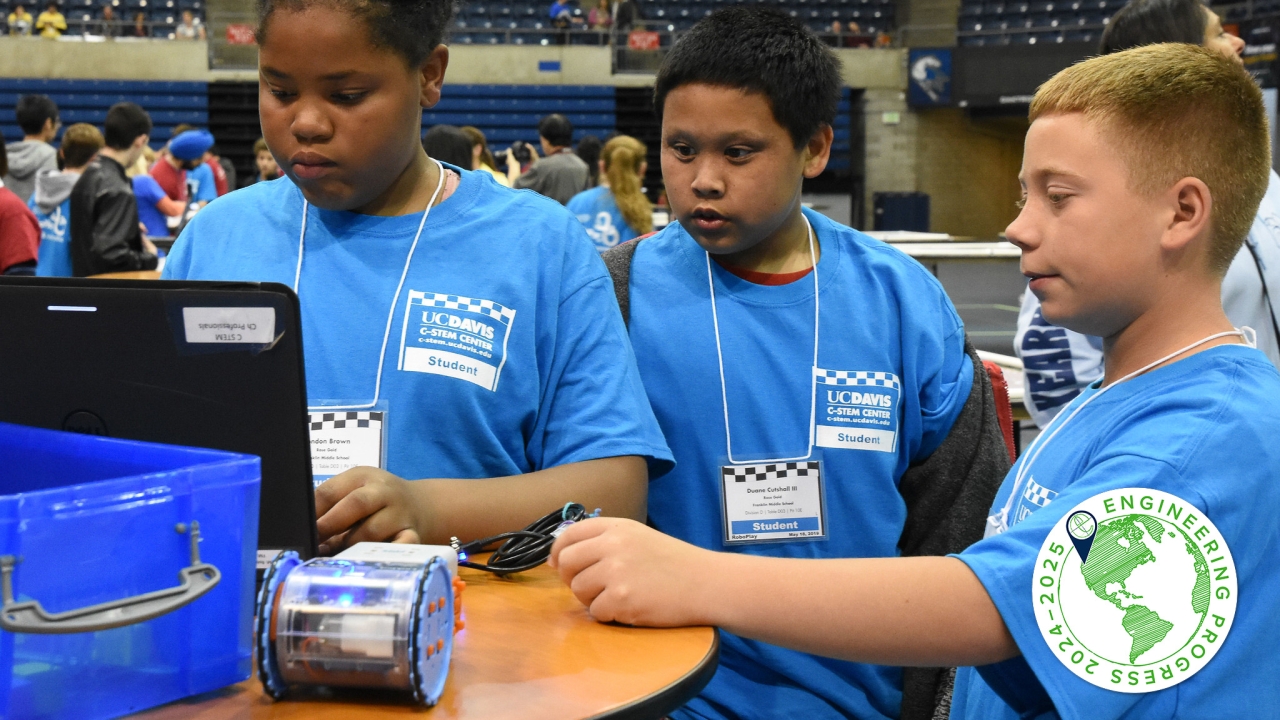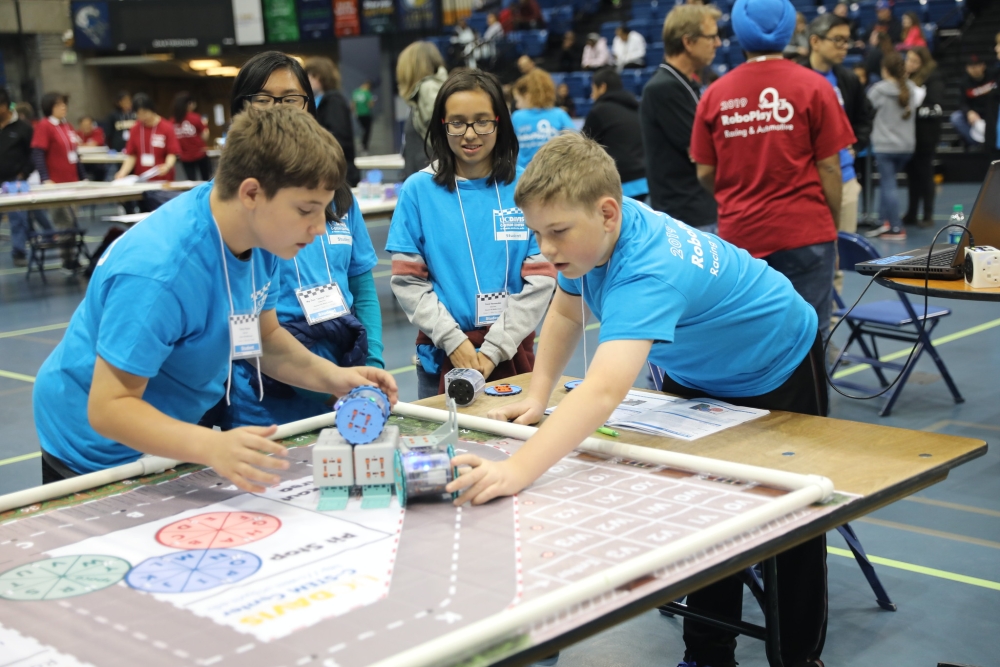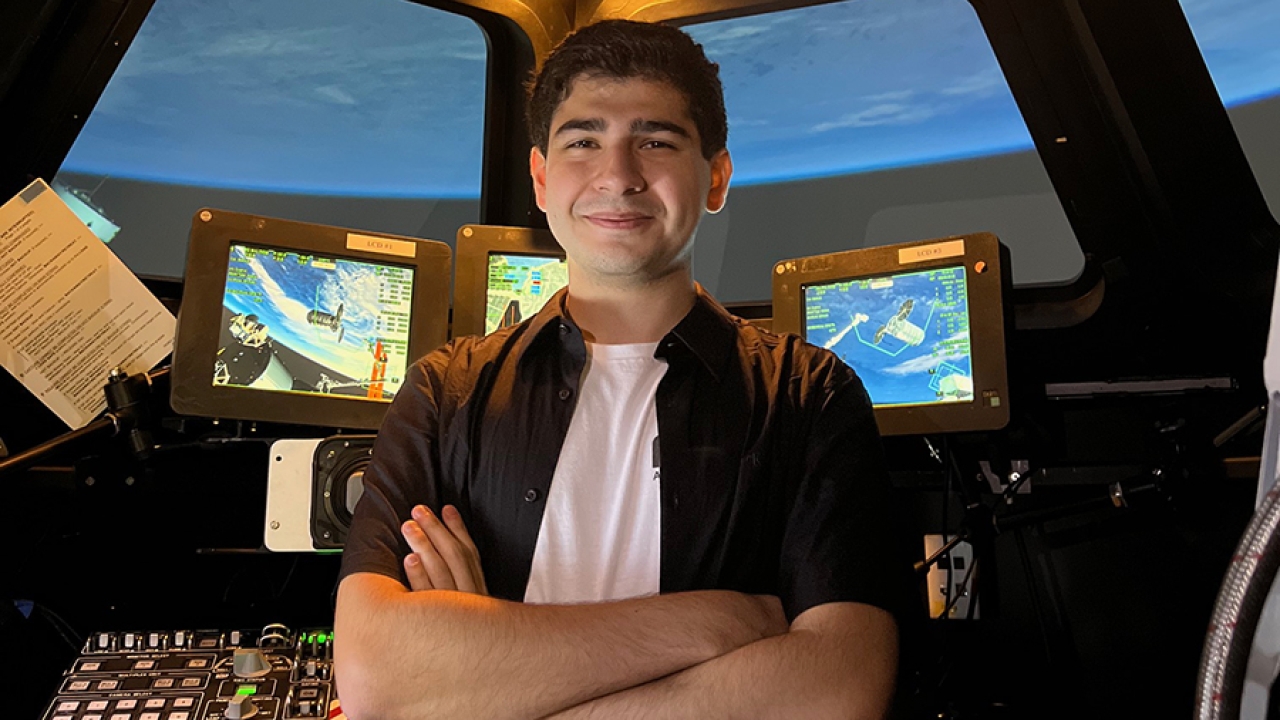
Engineering Equity: Harry Cheng’s Mission to Revolutionize K-12 STEM Education
At the UC Davis College of Engineering, the concept of "engineering for all" is more than a slogan — it is a call to action. As a throughline for the college’s research endeavors, it informs education and outreach, exemplified by programs like the Center for Integrated Computing and Science, Technology, Engineering and Math Education, or C-STEM, led by Professor of Mechanical and Aerospace Engineering Harry Cheng.
In California, only 35.5% of students met or exceeded mathematics standards in 2024. Through innovative tools, transformative curricula and statewide partnerships, C-STEM is reimagining K-12 math education to close equity gaps in classrooms across California.
Cheng joined UC Davis in 1992, and his research has focused on robotics and mechatronics. His STEM education journey began about 20 years ago when he taught a computer science programming course to UC Davis first-year undergraduate students. He noticed that only a handful of students had prior coding knowledge.
From the experience, Cheng became motivated to explore how to introduce programming to K-12 students and better prepare them for STEM careers. However, school administrators pointed out that their students primarily needed help with algebra, which students must pass to graduate from high school.
"That’s how I started," recalls Cheng, who views algebra as a gatekeeper to STEM. "How can we better teach students algebra and give them a foundation in STEM?" However, he quickly realized that starting in high school was too late. Today, C-STEM’s efforts begin as early as transitional kindergarten, introducing young learners to coding and robotics and empowering teachers with professional development and support.

A Toolkit for Transformation
Central to C-STEM’s success is its unique approach to teaching math through programming and robotics. Unlike traditional curriculum, C-STEM’s custom-designed robots engage K-12 students in hands-on learning, incorporating play while making abstract concepts tangible.
C-STEM’s comprehensive curriculum spans from transitional kindergarten math to Algebra I, Geometry, Algebra II, computer science, including the advanced placement course "Computer Science Principles," and engineering design. It has earned “A-G approval” program status, meaning its curriculum satisfies University of California and California State University admission requirements. At the UC Davis campus and across school districts, the center also provides professional development courses for teachers, equipping them to integrate these tools into their classrooms.
Roland Hosch, a fifth grade teacher in the Redlands Unified School District, called C-STEM "the best professional development training of my 28-year career," crediting it with transforming his approach to teaching math.
"We inspire teachers, then we inspire the students by giving them the tools and resources they need to succeed," Cheng said.
Equity in Action
During the 2022-2023 academic year, as an example, only 16% of fifth graders met or exceeded the state standards at the Hacienda La Puente Unified School District. The next year, the same students were sixth graders in a C-STEM math class, and 71% of them met or exceeded the state standards. That’s roughly a 344% year-over-year increase in students meeting or exceeding the state math standards with the C-STEM curriculum.
One student’s words captured the excitement of C-STEM’s classroom initiatives: "It’s a dream come true!"
C-STEM also works to address gender equity through programs like the Girls in Robotics Leadership, or GIRL, Camp, which pairs middle school participants with high school and college-aged mentors. In 2021, C-STEM launched Ujima GIRL, which aims to address the significant challenges of inclusion and equity for Black/African American middle school and high school girls in STEM, with a $2.4 million grant from the National Science Foundation.
Overcoming Barriers
Transforming STEM education at scale requires navigating systemic barriers. Curriculum approval can take years, and school districts face budget constraints that limit access to robotics and programming tools. Despite these hurdles, Cheng and his team are making progress. From rural mountain schools in Trinity County to urban districts like Redlands, C-STEM’s impact is now felt statewide in more than 100 school districts.
Cheng’s dedication extends beyond technical solutions. His efforts to build strong partnerships at all levels with state officials, county offices of education, district and school administrators, teachers, parents, industry partners and professional societies underscores his belief that "it takes a village to transform K-12 math education."

The Path Forward
By breaking down barriers and equipping students and teachers with the tools they need to succeed, Cheng’s work is paving the way for a more equitable future.
"I am honored to work with a large number of dedicated partners and use my engineering approach, engineering knowledge, computer science and robotics expertise and systematic way to address these issues and make a difference in society," Cheng said of his engineering-informed contributions to STEM education. "I am devoted to making a change because I know K-12 math education is one of the biggest challenges today."
C-STEM is actively ensuring that no community is left behind, and Cheng is optimistic about achieving enduring positive results.
"We are starting to move the needle."






